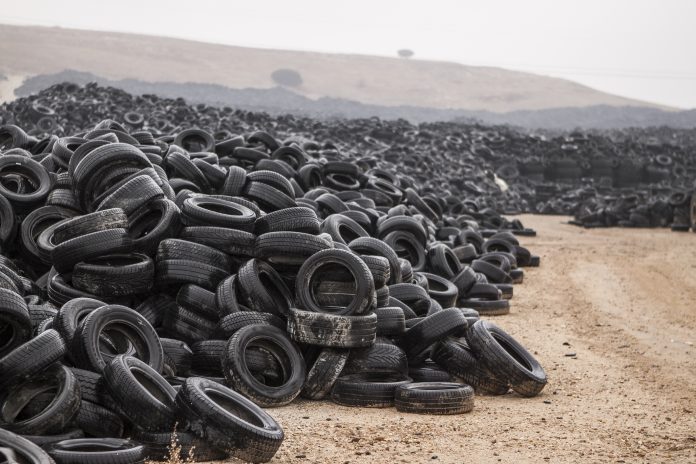Tackling rubber waste: Every year, millions of tyres end up in landfills, ultimately contributing to our climate crisis. In 2021, over 274 million tyres were discarded in the United States, and almost 20% ended up in landfills
This waste takes up space and acts as an environmental threat, such as chemical leaching and the risk of spontaneous combustion. Though pyrolysis, a method that chemically breaks down rubber, has been used to recycle tyres, it produces harmful byproducts like benzene and dioxins, raising concerns about human health and environmental safety.
Alternative ways to recycle rubber waste
A new study from researchers at the University of North Carolina at Chapel Hill offers a promising alternative to these traditional methods. Led by Dr. Aleksandr Zhukhovitskiy, the team has developed a new chemical process to break down rubber waste, transforming it into valuable materials that could have significant industrial applications.
A key part of this new method is overcoming one of the main challenges of recycling rubber. Rubber, especially the synthetic variety used in tyres, is made up of polymer chains that are tightly cross-linked, which gives the material its strength and flexibility but also makes it difficult to break down.
Traditional recycling methods usually focus on breaking these sulfur cross-links (de-vulcanization) or cleaving the polymer backbones. Still, these processes often result in low-quality byproducts or weak, degraded materials.
Sustainable alternative to sourcing resins
The new technique introduces a sulfur diimide reagent that attaches amine groups to specific locations within the polymer chains. This step is crucial for the next phase of the process, which rearranges the polymer’s backbone structure.
The result is a broken-down, soluble material that retains functional properties, making it suitable for repurposing into high-value products like epoxy resins.
Epoxy resins are widely used in various industries, including adhesives, coatings, and composite materials. Typically, these resins are made from petroleum-based chemicals. Still, the research team demonstrated that their new process could produce resins from rubber with similar strength to those made from traditional, petroleum-based materials. This provides a sustainable alternative to sourcing resins from fossil fuels.
Environmentally friendly methods
Unlike traditional methods, this process works under mild conditions, which often require high temperatures or expensive catalysts.
It operates at temperatures between 35-50°C (95-122°F) in water-based environments, reducing the need for harmful solvents and making it more cost-effective and eco-friendly.
The team also evaluated the environmental impact of their method using the Environmental Impact Factor (E-factor), which measures the amount of waste generated relative to the amount of valuable product produced. While the overall E-factor, including solvents, was high, the simple E-factor (excluding solvents) was much lower, pointing to areas where further optimisation could reduce waste generation and enhance sustainability.
This method offers a new way to handle rubber by transforming post-consumer rubber into valuable materials instead of sending it to landfills; this new approach could help tackle one of the most urgent environmental issues. The research team is already exploring ways to make the process even more sustainable by testing greener solvent systems and reaction conditions.











